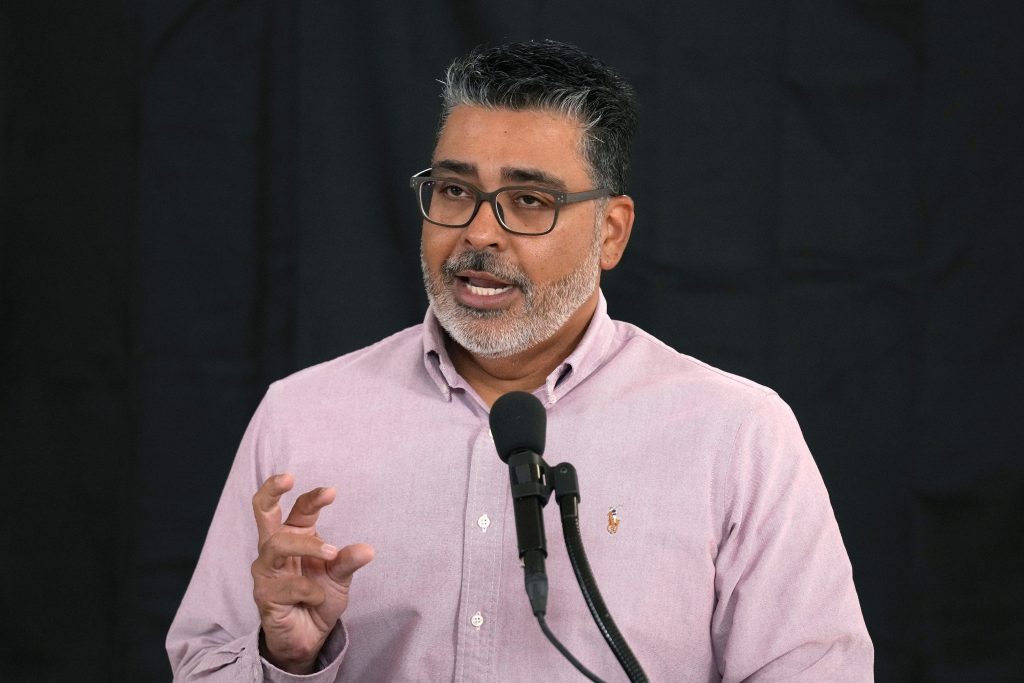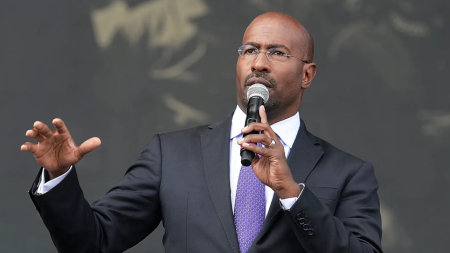By ANITA SNOW (Associated Press)
TEMPE, Ariz. (AP) — Arizona’s new heat officer announced on Friday that he is collaborating with local governments and nonprofit organizations to open more cooling centers and ensure homes have functioning air conditioners this summer, aiming to prevent another significant number of heat-related deaths. Last year, over 900 people in the state died due to extreme heat.
“We don’t want to see that happen again,” said Dr. Eugene Livar, referring to last year’s fatalities. He emphasized the importance of being prepared and responding effectively to the situation, even though controlling the extreme heat itself is challenging.
Livar, a physician at the Arizona State Department of Health Services, was appointed to his position by Gov. Katie Hobbs earlier this year, becoming the first heat officer of a U.S. state. named The recognition of the serious public health risks associated with climate-driven extreme heat has led to the creation of this new position. Such extreme heat has been on the rise in recent years.
Livar was joined by officials from Phoenix, Tempe and Maricopa County at a news conference to kick off Arizona Heat Awareness Week. Maricopa County, the state's largest county, witnessed 645 heat-related deaths last year. record Among the attendees was climate scientist David Hondula, who serves as Phoenix's first heat officer, as well as the officials from the neighboring cities and Maricopa County.
The increased collaboration comes as federal agencies seek improved methods to safeguard individuals from the harmful heat waves, which are appearing earlier, lasting longer, and becoming more severe. The National Weather Service and the U.S. Centers for Disease Control and Prevention introduced a new online heat-risk system last month. This system incorporates meteorological and medical risk factors with a simplified and color-coded seven-day forecast for worsening heat waves. Last summer, Phoenix experienced its hottest three months on record, with the hottest July and the second-hottest August. The average daily temperature of 97 F (36.1 C) in June, July and August exceeded the previous record of 96.7 F (35.9 C) set in 2020. Moreover, a record was set in July with a 31-day streak of highs at or above 110 F (43.3 C).
The commencement of this year’s hot season in Maricopa County began on Wednesday and runs from May 1 through Sept. 30. Hobbs declared May 6-10 as Arizona Heat Awareness Week to raise awareness about the dangers of the summer in this arid Southwest state and to focus on improving the protection of people. This year, Arizona also established an Extreme Heat Preparedness Plan. Maricopa County has allocated almost $4 million to extend the evening and weekend hours of cooling and respite centers, where individuals can seek relief from the outdoor heat, relax in an air-conditioned environment, and hydrate. Additionally, efforts are being made to assist those with limited resources in paying their utilities and repairing or replacing their air conditioners. By ANITA SNOW (Associated Press) TEMPE, Ariz. (AP) — The new heat officer of Arizona stated on Friday that he is collaborating with local authorities and non-profit organizations to expand the number of cooling centers and make sure that households have functional air conditioners this summer in a more coordinated attempt to avoid another high number of heat-related fatalities, which exceeded 900 […] of worsening heat waves.
Last summer, Phoenix experienced the hottest three months since record-keeping began in 1895, including the hottest July and the second-hottest August. The daily average temperature of 97 F (36.1 C) in June, July and August passed the previous record of 96.7 F (35.9 C) set in 2020. Phoenix also set a record in July with a 31-day streak of highs at or above 110 F (43.3 C).
This year’s hot season began Wednesday in Maricopa County, where it runs from May 1 through Sept. 30.
Hobbs this year proclaimed May 6-10 as Arizona Heat Awareness Week to draw attention to the dangers of the summer in this arid Southwest state and work on ways to better protect people. Arizona for the first time this year also has an Extreme Heat Preparedness Plan.
Among the new measures the state is introducing are at least a half dozen mobile cooling centers made with shipping containers that are solar powered and can be moved to wherever they may be needed.
The City of Phoenix for the first time this summer is opening two 24-hour cooling centers, one in a downtown public library and the other in a senior center.
Maricopa County has set aside nearly $4 million to expand evening and weekend hours of cooling and respite centers where people can escape the outdoor heat, rest in an air-conditioned space and drink plenty of water. It is also working to help people with limited resources to get help paying their utilities and to have their air conditioners repaired or replaced.









